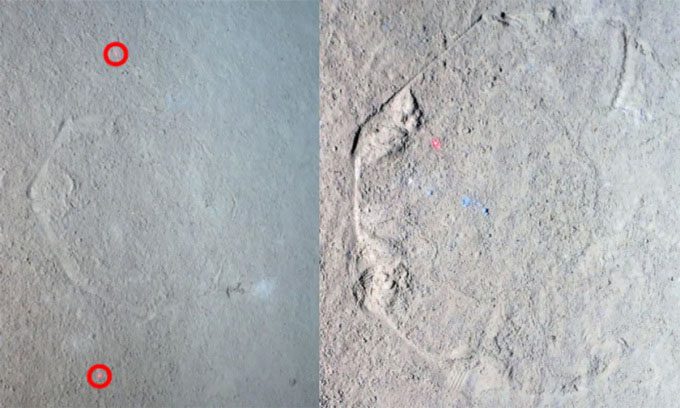Hexagonal Patterns with Diameters of 4 – 47 cm on the Ocean Floor Likely “Crafted” by Octopuses.

Hexagonal patterns on the ocean floor. (Photo: Alexey V. Golikov)
A new study by expert Alexey V. Golikov at the Helmholtz Ocean Research Center in Kiel, Germany, along with colleagues, has helped decode the mysterious hexagonal shapes found on the ocean floor in the Fram Strait between Greenland and Svalbard, IFL Science reported on July 12. Some hexagons are very small, while others are larger than a basketball. Thanks to remotely operated vehicles (ROVs), the research team discovered they could be the markings of the Dumbo octopus. The study was published in the Proceedings of the Royal Society B.
Similar to Earth’s atmosphere, the ocean can be divided into different layers. At an astonishing depth of 1,000 – 4,000m, the bathypelagic zone is one of the largest and least explored ecosystems on the planet. This area also hosts some of the largest and most difficult-to-study organisms. The reason is that unlike smaller organisms, capturing and bringing them to the surface for study can severely harm them, making them difficult to identify. Deep-sea creatures still hold many mysteries, and for soft-bodied animals like cephalopods, experts must rely on incidental observations from ROVs to study them.
Observations of deep-sea octopuses in Arctic waters. (Video: IFL Science)
The Cirrata Octopus Group is found in all oceans on Earth and is sometimes referred to as the “Dumbo octopus” due to its fins resembling the large ears of the animated character Dumbo. Their prey primarily consists of worms and crustaceans.
Recent deep-sea surveys using ROVs in Arctic waters have revealed a significant number of Cirroteuthis muelleri (part of the Cirrata group) roaming in the water column at depths of 500 – 2,600 m above the ocean floor. Cameras also revealed that they employ foraging strategies typically seen in deep-sea soft-bodied fish and sea cucumbers. They create strange hexagonal shapes on the ocean floor while feeding.
In the survey, scientists discovered 106 hexagonal shapes on the ocean floor among 92 of the 5,100 images collected. “These patterns often contain imprints from the arms of the octopus pressed into the sea bed. They vary in diameter from 4 to 47 cm, but most are close to the average diameter of 22 cm, which corresponds to the size of the octopus,” the research team noted.




















































